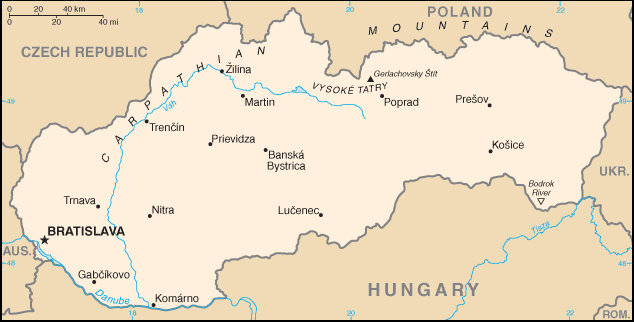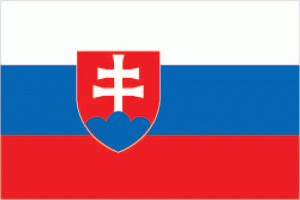Slovakia
 Aglow Leader:
Aglow Leader:
Rut Krajciova
National Board President
Capital: Bratislava
Pray:
February 2020 – Elections of the National Council of Slovakia
- Thank God for the Christian representatives in the Parliament.Pray for continued favor upon them.
- Pray for new candidates who fear the Lord and are filled with His wisdom.
- Pray for Aglow intercessors who pray regularly in Parliament. Declare that the plans of God are released with fruitfulness in the Slovak Republic as they pray.
- Though Slovakia is a small nation in the heart of Europe, pray this nation will influence surrounding nations. Pray they are a voice calling, Seek the Lord while He may be found; call on Him while He is near. Isaiah 55:6
- Pray for Aglow in Slovakia. Pray that Aglow spreads into all areas where God is opening the doors. Pray Aglow brings change and transformation, particularly in prison ministry.
- Enlarge the place of your tent, stretch your tent curtains wide, do not hold back; lengthen your cords, strengthen your stakes. For you will spread out to the right and to the left; your descendants will dispossess nations and settle in their desolate cities. Isaiah 54: 2-3
Proclaim:
- Slovakia belongs to Jesus. The goodness of the Lord in Slovakia will be known to all!
- I shall make mention of the loving kindnesses of the Lord, the praises of the Lord, according to all that the Lord has granted us. Isaiah 63:7
Interesting Facts About the Slovakia
 Background: Slovakia traces its roots to the 9th century state of Great Moravia. Subsequently, the Slovaks became part of the Hungarian Kingdom, where they remained for the next 1,000 years. After the formation of the dual Austro-Hungarian monarchy in 1867, backlash to language and education policies favoring the use of Hungarian (Magyarization) encouraged the strengthening of Slovak nationalism and a cultivation of cultural ties with the closely related Czechs, who fell administratively under the Austrian half of the empire. After the dissolution of the Austro-Hungarian Empire at the close of World War I, the Slovaks joined the Czechs to form Czechoslovakia. The new state was envisioned as a nation with Czech and Slovak branches.
Background: Slovakia traces its roots to the 9th century state of Great Moravia. Subsequently, the Slovaks became part of the Hungarian Kingdom, where they remained for the next 1,000 years. After the formation of the dual Austro-Hungarian monarchy in 1867, backlash to language and education policies favoring the use of Hungarian (Magyarization) encouraged the strengthening of Slovak nationalism and a cultivation of cultural ties with the closely related Czechs, who fell administratively under the Austrian half of the empire. After the dissolution of the Austro-Hungarian Empire at the close of World War I, the Slovaks joined the Czechs to form Czechoslovakia. The new state was envisioned as a nation with Czech and Slovak branches.
During the interwar period, Slovak nationalist leaders pushed for autonomy within Czechoslovakia, and in 1939 Slovakia became an independent state created by and allied with Nazi Germany. Following World War II, Czechoslovakia was reconstituted and came under communist rule within Soviet-dominated Eastern Europe. In 1968, an invasion by Warsaw Pact troops ended the efforts of Czechoslovakia’s leaders to liberalize communist rule and create “socialism with a human face,” ushering in a period of repression known as “normalization.” The peaceful “Velvet Revolution” swept the Communist Party from power at the end of 1989 and inaugurated a return to democratic rule and a market economy. On 1 January 1993, Czechoslovakia underwent a nonviolent “velvet divorce” into its two national components, Slovakia and the Czech Republic. Slovakia joined both NATO and the EU in the spring of 2004 and the euro zone on 1 January 2009.
Government Type: parliamentary republic
Population: 5,436,066 (July 2021 est.)
Ethnic Groups: Slovak 80.7%, Hungarian 8.5%, Romani 2%, other 1.8% (includes Czech, Ruthenian, Ukrainian, Russian, German, Polish), unspecified 7% (2011 est.)
Languages: Slovak (official) 78.6%, Hungarian 9.4%, Roma 2.3%, Ruthenian 1%, other or unspecified 8.8% (2011 est.)
Religions: Roman Catholic 62%, Protestant 8.2%, Greek Catholic 3.8%, other or unspecified 12.5%, none 13.4% (2011 est.)
Interesting Facts information from the cia.gov website. Read more about the Slovakia
